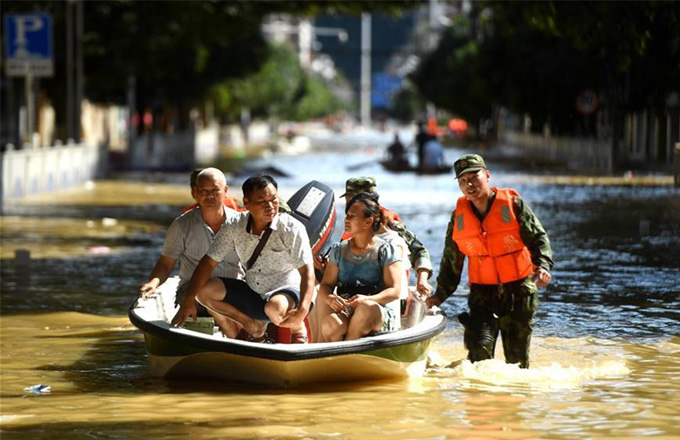Government, grassroots efforts protect endangered fish
XINING - Forty years ago, Li Yifan would net more than 100 Przewalksii's naked carp a day. Now, he and fellow volunteers are saving the fish, which became endangered after decades of overfishing.
The species of carp, known in China as huangyu, is endemic to the Qinghai Lake, China's largest inland saltwater lake. It is the dominant of five native species of fish in the lake which is located on the Qinghai Plateau.
From late May to mid-August every year, the carp swim upstream to three freshwater rivers to spawn, with the migration peaking in late June. Volunteers rescue carp that become stranded as small tributaries dry up during their arduous journey.
In 2015, Li and eight villagers from Gangca County set up a team of volunteers to protect the carp. "Previously we caught them, now we save them. It's retribution for our actions," Li said.
As a result of rampant fishing since the 1960s, when a famine swept the country, the lake's carp stock plunged from its peak of 320,000 tonnes in the 1950's to just 2,600 tonnes in 2001.
The fish was listed on the China Species Red List in 2004 due to overfishing and habitat loss. All fishing has been prohibited in the lake for the last 17 years, however, illegal fishing has persisted.
"The lake is so huge and the fishermen are cunning. Law enforcement can't deal with them on their own," said Norrigsang, a herdsman from Gangca who used his own savings to found a patrol to catch people fishing illegally along the lake's 300-kilometer-long shoreline in the 1990's.
The job is no easy task. He recalled an incident in January 2013, when the seven-member team was attacked by a group of more than 100 fishermen.
Thanks to the increased efforts of volunteers and intensified law enforcement, the illegal fishing of naked carp has been dramatically decreased since 2014, according to fishery authorities.
In addition to the volunteers, the local government is working to restore the fish population by helping them spawn.
Several years ago, the Gangca government dismantled a two-meter-high dam on the Shaliu River and built 18 steps in its place to assist the fish migration. Last year, it spent 8.5 million yuan (1.25 million U.S. dollars) building 21 steps on the Quanji River.
But assisting the migration is only part of the battle, they also need to increase fertilization rates, The success rate for natural fertilization is extremely low, as the sperm of male carp can only survive for 20 seconds in the water, said Zhou Weiguo from the carp rescue center.
"With such low fertilization rates we can't increase the population of the endangered species," Zhou said.
In 2001, fishery workers began an artificial insemination program. They hatch fertilized eggs at the rescue center and raise the young fish, or fry, in tanks for a year before releasing them into the lake.
Since 2002, more than 100 million captive-bred carp fry have been released into the lake, with an 85 percent survival rate. Last year, the stock of carp in the lake climbed to 70,800 tonnes.
Despite the progress, there is still a long way to go, said Yang Shoude, a forest police officer in the Qinghai Lake National Nature Reserve. "If the naked carp population can not be increased in time, algae growth will become out of control and eventually 'kill' the lake," Yang said.
Winning the battle requires combined grassroots and governmental efforts, Norrigsang said.

























